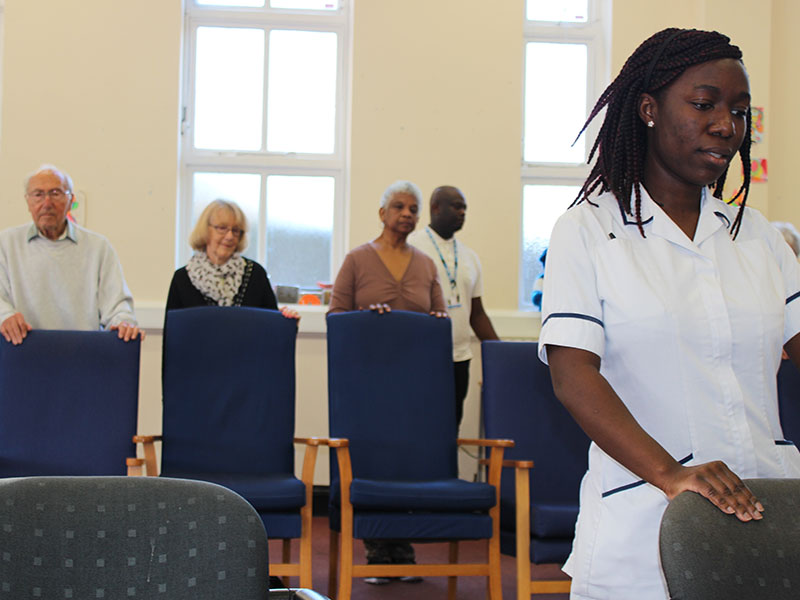Pilot: Reducing the risk of falls of older people under hospital care – NELFT
GaitSmart is working with NELFT to improve the mobility and reduce the risk of falling of older people under hospital care.
The North East London Foundation Trust (NELFT) has been running a Quality Improvement Programme to ascertain whether elderly people under the care of the community hospital could improve their mobility and frailty through an intervention using GaitSmart.
The programme included four GaitSmart tests per volunteer with one test every 2-4 weeks and a personalised treatment plan based on the individual test results. The volunteers were fallers admitted to the Community Hospital or under the care of the Community Hospital and receiving Intensive Rehabilitation Service (IRS) at home, including some who had suffered a hip fracture.
The results have shown that this programme yields a high Return on Investment (ROI) and reduces the risk of falling and reliance on walking aids. It also improves frailty levels, fear of falling and the ability to undertake activities of daily living.

Programme Results
Economic Benefits
The University of East Anglia (UEA) were commissioned to develop a Health Economics Model (HEM) for this NELFT study. The model includes the conventional method of calculating ROI and the cost of a Quality Adjusted Life Year (QALY) using subjective ‘Fear of Falling’ data. It also includes a more robust approach using objective gait data to determine ‘Risk of Falling’.
For this study cohort, where physiotherapies and GaitSmart Intervention is applied to people who suffer a fall that result in an injury and are under the Community Hospital care, the ROI is 85%, or a 85p net return for every £1 spent.
Clinical Benefits
- Speed Increased by 0.16m/s – The average speed at the start of the programme was 0.46m/s, and 0.62 m/s at the end.
- Use of Walking Aids Improved – At the start of the programme, 36% of the volunteers used a frame or walker and only 18% walked unaided. At the end of the programme, 39% of the volunteers walked unaided and only 17% required a frame or walker.
- Frailty Decreased by 11.6% – The Edmonton Frailty Score (EFS) was used to determine frailty. At the start of the programme the average volunteer was “mildly frail”, EFS. At the end of the programme the average volunteer was “vulnerable”.
- Fear of Falling Decreased by 11.6% – Fear of falling was monitored using the Falls Efficacy Scale – International, short form (FES-I). At the start of the programme the average volunteer had a high fear of falling. At the end of the programme the average volunteer had a moderate fear of falling.
- GaitSmart Score Improved by 20% – The average GaitSmart Score, which summarises the measurements of key gait parameters was 26% at the start of the programme. At the end of the programme this had increased to 46%. Frailty levels were shown to correlate strongly with the GaitSmart Score.




